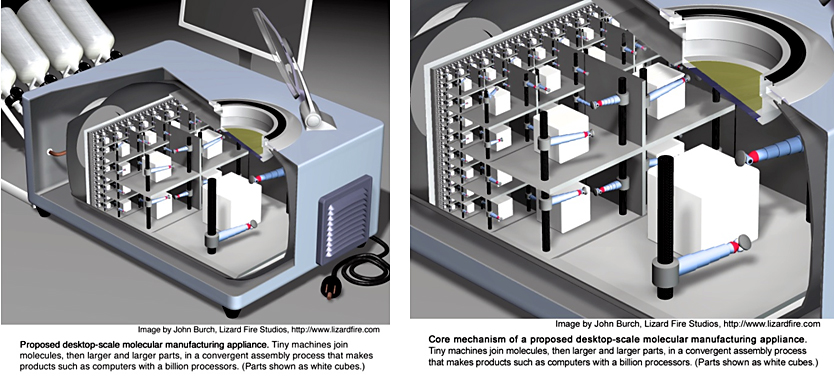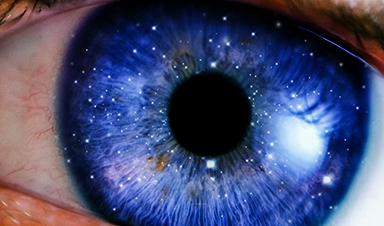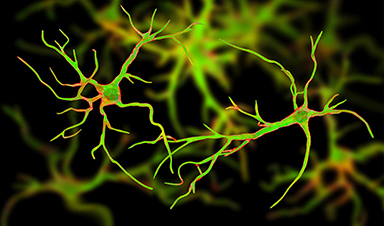
Other Books in Development in 2025
Nanotechnology, Nanomedicine, and AI: Toward the Dream of Global Health Care Equivalency


This book will explore and articulate an expanded vision for where advanced nanomedicine may lead.
The larger picture might be manifest via the emergence of a momentous paradigm shift that will have the potential capacity to dramatically transform the entire medical domain, through what is referred to as “Global Health Care Equivalency”, (GHCE), where any individual on the planet may have access to the same advanced and cost effective nanomedical diagnostic and therapeutic technologies, no matter where they happen to reside, or under what conditions they live.
The attainment of GHCE might serve to significantly reduce the perception of individuals in the developing world of being marginalized, at least in terms of health care, which may ultimately translate to conflict reduction. In the developed world, GHCE would serve to dramatically reduce health care expenditures across the board. Synergies between nanotechnology, nanomedicine, and AI may enable this vision on a global scale. Progress toward this goal will be incremental, with each successive wave of nanomedical technologies being more advanced than the previous wave.
The tipping point will arrive with the emergence of Molecular Manufacturing (MM), Quandary – Are Molecularly Manufactured Burgers Imbued with the Life Force? by Frank Josef Boehm and Angelika Domschke – QSpace Forums , which will make possible the cost effective fabrication of the classes of advanced autonomous nanomedical devices that Boehm describes in his first book: Nanomedical Device and Systems Design: Challenges, Possibilities, Visions.

Molecular Manufacturing: Emergence of the Grand Equalizer

![]()
This comprehensive companion text to Nanotechnology, Nanomedicine, and AI: Toward the Dream of Global Health Care Equivalency will explore the concepts and technologies behind the potential emergence of advanced Molecular Manufacturing(MM), while articulating how its potentially immense power may touch and positively transform practically every facet of human endeavor, while driving global scale environmental remediation.
It is estimated by many researchers and thought leaders that MM may transition from a science fiction concept to reality within the next 10-30 years. The rapidly evolving sophistication and popularity of 3D printing that we are witnessing at present might be considered to be a formative precursor of envisaged, exponentially more powerful, and dynamic “factory-at-home” systems, which would enable the ultrafine organization of molecular and atomic constituents to cumulatively fabricate virtually any type of consumer product imaginable (e.g., healthy gourmet foods, running shoes, toothbrushes, physician prescribed nanomedical diagnostic or therapeutic devices, photovoltaic cells, advanced batteries, smart phones, computers, as well as components for building additional MM units) with atomic/molecular precision.
In the medical realm MM will constitute the prerequisite technology for the realization of the vision of Global Health Care Equivalency.

Nanomedical Brain/Cloud Interface: Explorations and Implications


This book embarks on an in depth exploration of the future (hypothetical) possibility that the cerebral cortex of the human brain might be seamlessly, safely, and securely connected with the Cloud as a Brain/Cloud Interface (B/CI). Such an envisaged nanomedically facilitated cognitive augmentation may consist of a highly integrated network of sophisticated autonomous nanorobotic devices coupled with advanced AI toward the enablement of instantaneous and finely controllable connectivity with the Cloud.
This interface might serve as a personalized conduit through which individuals would not only have immediate access to virtually any facet of cumulative human knowledge, but also the optional and specialized capacity to engage in real time fully immersive experiential/sensory engagement, including what is referred to as “Transparent Shadowing” (TS), where individuals may experience episodic segments of the lives of other willing participants anywhere on the planet in real time, at full sensory resolution.
In conjunction with an investigation of the technical aspects of a B/CI, this book will also delve into its ethical, moral, sociological, legal, and philosophical implications. The prospective usefulness and benefits of such a powerful technology will be tempered by a careful consideration of the perceived risks and potential for misuse, such as neocortex hacking and nefarious thought manipulation and control, toward the formulation of a prudent future policy.
Myriad non-trivial questions will be brought to bear toward elucidating how B/CI technologies might potentially impact ones sense of self, and how that self may relate to others, the world, and beyond.
What might the benefits, risks, and consequences for human civilization be, when individuals have access to unprecedented opportunities for significant personalized cognitive, sensual, and experiential augmentation, and who may, through the use of B/CI technologies, be so intimately interconnected?
(Image credit: i-HLS)

News
Current Heart Health Guidelines Are Failing To Catch a Deadly Genetic Killer
New research reveals that standard screening misses most people with a common inherited cholesterol disorder. A Mayo Clinic study reports that current genetic screening guidelines overlook most people who have familial hypercholesterolemia, an inherited disorder that [...]
Scientists Identify the Evolutionary “Purpose” of Consciousness
Summary: Researchers at Ruhr University Bochum explore why consciousness evolved and why different species developed it in distinct ways. By comparing humans with birds, they show that complex awareness may arise through different neural architectures yet [...]
Novel mRNA therapy curbs antibiotic-resistant infections in preclinical lung models
Researchers at the Icahn School of Medicine at Mount Sinai and collaborators have reported early success with a novel mRNA-based therapy designed to combat antibiotic-resistant bacteria. The findings, published in Nature Biotechnology, show that in [...]
New skin-permeable polymer delivers insulin without needles
A breakthrough zwitterionic polymer slips through the skin’s toughest barriers, carrying insulin deep into tissue and normalizing blood sugar, offering patients a painless alternative to daily injections. A recent study published in the journal Nature examines [...]
Multifunctional Nanogels: A Breakthrough in Antibacterial Strategies
Antibiotic resistance is a growing concern - from human health to crop survival. A new study successfully uses nanogels to target and almost entirely inhibit the bacteria P. Aeruginosa. Recently published in Angewandte Chemie, the study [...]
Nanoflowers rejuvenate old and damaged human cells by replacing their mitochondria
Biomedical researchers at Texas A&M University may have discovered a way to stop or even reverse the decline of cellular energy production—a finding that could have revolutionary effects across medicine. Dr. Akhilesh K. Gaharwar [...]
The Stunning New Push to Protect the Invisible 99% of Life
Scientists worldwide have joined forces to build the first-ever roadmap for conserving Earth’s vast invisible majority—microbes. Their new IUCN Specialist Group reframes conservation by elevating microbial life to the same urgency as plants and [...]
Scientists Find a Way to Help the Brain Clear Alzheimer’s Plaques Naturally
Scientists have discovered that the brain may have a built-in way to fight Alzheimer’s. By activating a protein called Sox9, researchers were able to switch on star-shaped brain cells known as astrocytes and turn them into [...]







